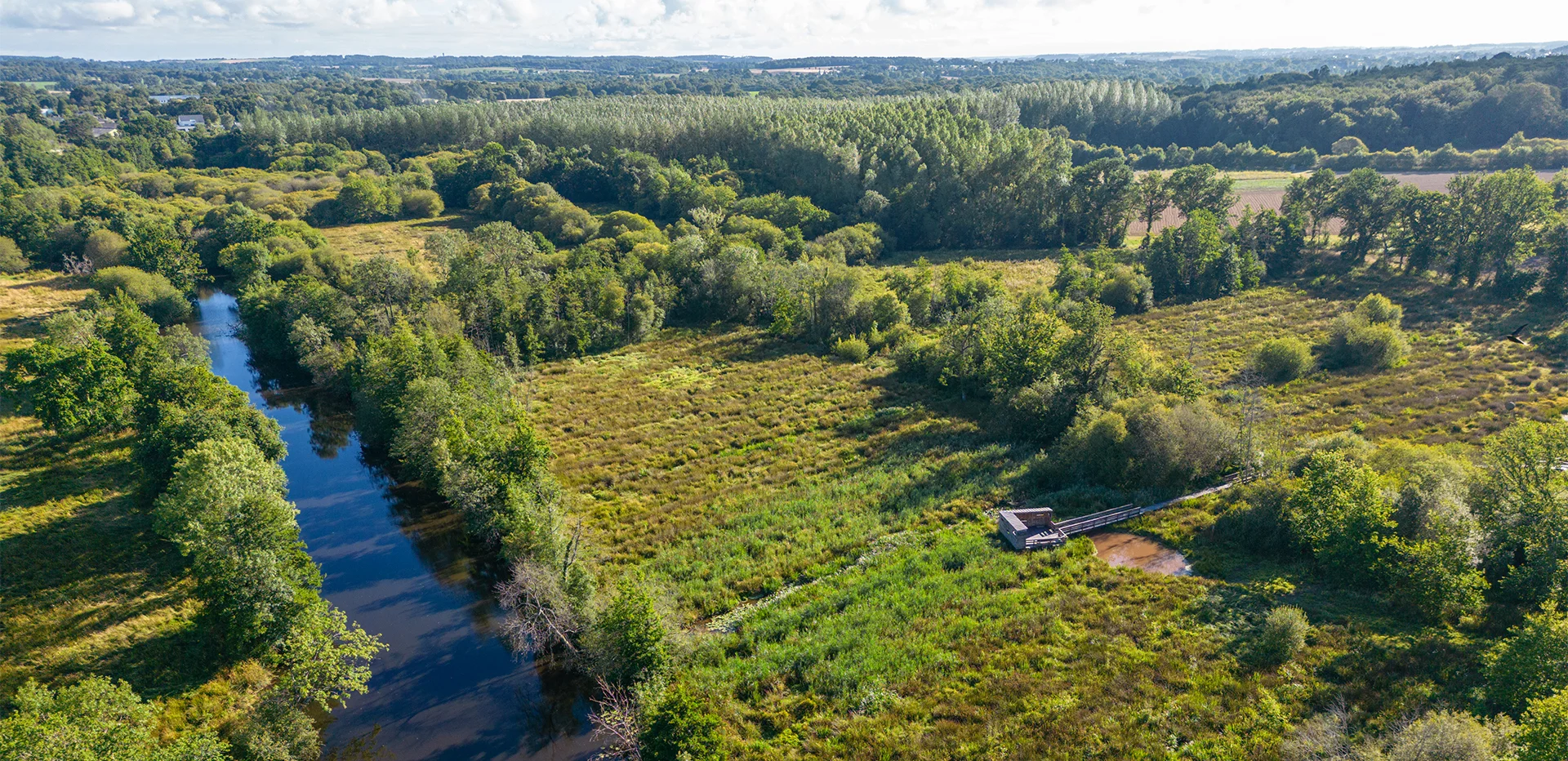Protecting wetlands: an urgent need to act
Because of their wealth of habitats and species, their various ecological roles and the services they provide to all life on Earth, wetlands have a crucial part to play in humanity and nature’s future. Yet they face persistent global threats. Given that these precious allies in the fight for the planet are disappearing three times faster than forests, it is more urgent than ever that we protect them if we are to protect our regions.
The crucial role played by wetlands
What is a wetland?
A transitional space between land and water, wetlands come in all different forms, including marshes, swamps, peatland, flood plains, estuaries, deltas, lagoons, mangroves and so on. These areas are fabulous biodiversity hotspots on which depend 100% of amphibians (such as frogs, toads, salamanders and newts), 50% of birds and 30% of France’s special but threatened plants, as well as many species of fish and insects.
Wetlands are among the planet’s most precious ecosystems. They provide humans with many essential services, such as supplying food, managing and purifying water, and absorbing carbon dioxide. They remove pollution from the environment by helping sediment deposits to build up and trap harmful substances, such as nitrates and phosphates, and in this way they contribute to better water quality.
Vital environments under threat
Once considered useless or even harmful, many wetlands have been degraded or destroyed by public policies or private initiatives. According to the United Nations, 35% of them have disappeared in 50 years, and all studies show that this decline is ongoing around the world.
There are various factors behind wetlands’ destruction and degradation, including intensified farming, the pressures of urbanisation and transport infrastructure, pollution and invasive species. These factors are also linked to the logging, hunting and fishing of species wetlands need if they are to survive.
Wetlands: a major challenge globally and locally
Collective awareness
Awareness of wetlands’ biological importance grew in the 1970s. They were deteriorating at an ever-faster pace, but it was then that wetlands became central to everyone’s focus internationally, and measures to safeguard them were both urgent and vital from that moment on.
In 1971, the Ramsar Convention adopted a broad definition of wetlands as “areas of marsh, fen, peatland or water, whether natural or artificial, permanent or temporary, with water that is static or flowing, fresh, brackish or salt, including areas of marine water the depth of which at low tide does not exceed six metres”. This intergovernmental treaty committed its 172 members, including France, to a collaborative approach to preserving wetlands and using them carefully.
Shared and sustainable commitments
Sites identified by the Ramsar Convention have strong international recognition. The signatory countries are committed to protecting more than 2,300 wetlands covering 250 million hectares. As of 2022, mainland France and its overseas territories have 52 internationally important wetlands, representing a combined surface area of 3.7 million hectares.
Ramsar also makes it possible to conduct experiments and put in place a strong network, particularly for nations with limited resources. To this end, the Conference of the Contracting Parties (COP) – the Convention’s governing body – meets every three years to review the actions carried out and approve the work plan for the three years to come. COP14 will be held from 5 to 13 November 2022 in Wuhan, China, taking as its theme “wetlands actions for people and nature”.
Terre de Femmes International Award 2023: wetlands in the spotlight
Protecting wetlands is central to the fight for biodiversity and water resources. As such, the Yves Rocher Foundation is dedicating the 5th “Terre de Femmes International Award” to the theme of wetlands. This prize aims to honour a project led by a woman or a collective of women (such as a charity, foundation or NGO) which helps to preserve these extremely fragile environments. It is open to all women around the world committed to protecting the environment.
The Biodiversity Observatory: an example of local and collective action
The Yves Rocher Foundation wanted to launch the Biodiversity Observatory project at the Villeneuve farm, not far from La Gacilly in Brittany. Thanks to all the work done to restore the space and manage it in a very tailored way, this 8-hectare wetland meadow now offers the public a place for walking and learning.
This project has emerged out of local and collective commitment from nearby charities, volunteers from Yves Rocher’s staff, the League for the Protection of Birds, the Fishing Federation, the EPTB Vilaine water board, the GRETIA research group, the SMGBO water quality organisation, the GMB wildlife charity, and many others. By pooling everyone’s expertise, we have been able to undertake restoration work that has revived the local environment and helped local biodiversity and new wetland species to develop. This project, which is genuinely regional in scope, sits very comfortably alongside France’s objective to protect its wetlands.
⏩ Explore the Biodiversity Observatory
Sources :
Zones humides, Service Public
Convention de Ramsar, site officiel
Perspectives Mondiales des Zones Humides, Ramsar, 2018



